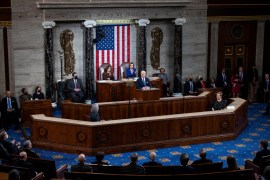By Isabel V. Sawhill
President Biden’s address to the nation provides an opportunity to educate the public on the issue of the debt ceiling in a way that will help to counteract Republican rhetoric. That rhetoric is superficially plausible and thus politically potent but often just plain wrong. Here are seven specific myths about the debt ceiling that need to be debunked.
Myth 1: Keeping the lid on debt will reduce government spending.
The national debt is the consequence of actions already taken by the Congress. It represents the bill for past wars, past tax cuts, and spending that has already occurred. To not honor such debt because of an arbitrary limit would produce uncertain but likely disastrous consequences for financial markets and the economy. It would increase not reduce future government spending due to the likely rise in interest rates. Additionally, any slowing of the economy in response to a threatened or actual default would automatically balloon deficits.
Myth 2: The debt that’s been accumulated over the past several decades is because of runaway government spending.
Both parties are at fault. At the end of the Clinton Administration in 2000, the federal budget was in surplus and the national debt was in decline. But since that time, about half of the increase in debt was due to laws enacted under Presidents Bush and Trump while the other half was the result of measures enacted under Presidents Obama and Biden. Republican tax cuts were a significant contributor to the red ink. The Bush tax cuts of 2001 and 2003 and their later extension added almost $6 trillion to the debt while the Republican tax cut of 2017 added close to $2 trillion with virtually none of the promised benefits to the economy. But much of the problem of growing debt is not the result of legislative action; it is the consequence of the automatic growth of entitlement spending which Democrats have been unwilling to curtail.
Myth 3: The new Congress is the party of fiscal responsibility.
In bargaining with their new Speaker, Kevin McCarthy, House Republicans put some budgetary limits on spending but none at all on further tax cuts. Instead of Pay-as-you-go, we now have Cut-as-you-go. The old budget rule applied to both spending and taxes. The new one affects spending only. That means no restraint on further tax cuts and thus much less restraint on rising debt.
Myth 4: The Biden Administration doesn’t care about deficits and debt.
To be sure, the Biden Administration could have done more; his student loan proposal would have ballooned deficit to the tune of $300 billion over a decade. At the same time, the Inflation Reduction Act, included new resources for the Internal Revenue Service to help it collect the $7 trillion in taxes that it estimates will be due but not paid over the next decade. House Republicans are trying to rescind most of this new funding for the IRS. That would hamper its ability to collect those taxes, overwhelmingly owed by the very wealthy. The problem isn’t tax avoidance; the problem is tax evasion.
Myth 5: We can balance the budget in ten years by cutting nonessential programs without hurting seniors or other vulnerable groups.
Some of the House conservatives extracted a pledge from Speaker McCarthy to balance the budget in 10 years. But to do so without tax increases and without cutting social security, Medicare, veterans programs, and defense would almost eliminate the rest of government, requiring cuts of 85 percent in all other programs.
Myth 6: The federal government is bloated and out of control; the “deep state” is the problem.
The number of federal civilian government employees has not increased since the 1960s, despite a more than five-fold increase in federal spending. That spending has increased primarily because the population is aging and the costs of Social Security and Medicare have risen, accounting for most of the growth. The popularity of these programs has motivated even former President Trump to argue for their protection while the budget math has led many Democrats to see this pledge as a backdoor threat to these same programs.
Myth 7: Republicans have a realistic plan to control spending. They just need to get Democrats to go along with their plan.
The truth is that today’s Republicans are all hat and no cattle. They talk a big game without having the courage to even specify the programs that they want to cut. The President must submit a very detailed budget in March. Perhaps Republicans will produce something equally detailed but until they put their cards on the table, their fiscal credibility remains questionable.


